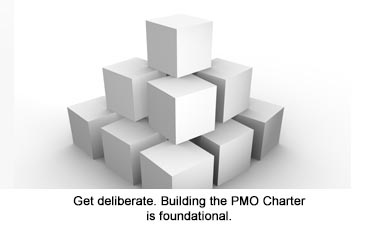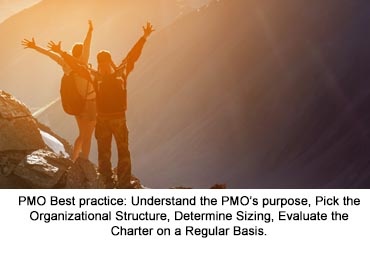
Before you know it, Annual Planning will be upon us again, and many of our clients are looking at their PMO (Project Management Office) for guidance. Repeatedly, we see successful PMOs prove their value by realigning the visions, goals, and functions of the PMO to the organization’s strategic objectives.
To build or enhance a PMO, you can never be more successful than your design. Realignments build strong PMOs, and the PMO Charter is foundational to regular realignment.
So how do you check your alignment? Follow the four steps below, and if you’d like further assistance, Rego offers free PMO snapshots to help you evaluate and/or develop a PMO charter.
1 | Understand the PMO Charter’s Purpose

The charter is a communication piece for what you do and why you exist. A PMO is not static. It needs to be reviewed every year or two, to make sure you’re still capturing and driving value for the business.
Driving value for the business requires analyzing how you function, the roles you need, and your staffing requirements.
2 | Pick the Correct PMO Organizational Structure
As your PMO matures, your roles and titles change. Naturally, a lot depends on the size of the organization.

Figuring out the appropriate organizational structure for your PMO depends on your business’s needs. We are constantly helping companies create, or review and revise, their PMO Charter.
One recent client’s key deliverable included revisiting the charter to analyze the PMO’s structure and effectiveness. Then we communicated the PMOs purpose to the rest of the organization, so they understood how the PMO provides value through services that directly tie to the company’s strategic objectives.
3 |Use PMO Sizing Practices
To make sure your PMO reflects an appropriate structure, look to sizing.
People often ask us what size is the right size for my PMO? Sizing is based on the services outlined in the charter—the number and length of tasks and activities.
A few other keys will help you determine sizing, like complexity, maturity, use of a tool—such as Clarity PPM (CA PPM) or ServiceNow PPM—and how the company is geographically situated. Is your company global? In one city, across the country? Do you use external resources?
More and more companies are outsourcing their PMOs to experts. They may not have in-house skills to fill those roles, at least in the beginning, so it’s common for external resources to staff the PMO and teach people in the organization how to grow into the position.
4 | Evaluate Your PMO Charter
If your company has an existing PMO, review the Charter at least bi-annually and make sure roles and size reflect the organization’s changes and capabilities.
PMOs guide organizations, and a PMO Charter is a best practice tool that provides direction on the journey to successful project and portfolio management.
Are you starting a PMO? Does your existing PMO have a charter? We’d love to hear how you’ve used a charter to legitimize your PMO and propel your organization.












